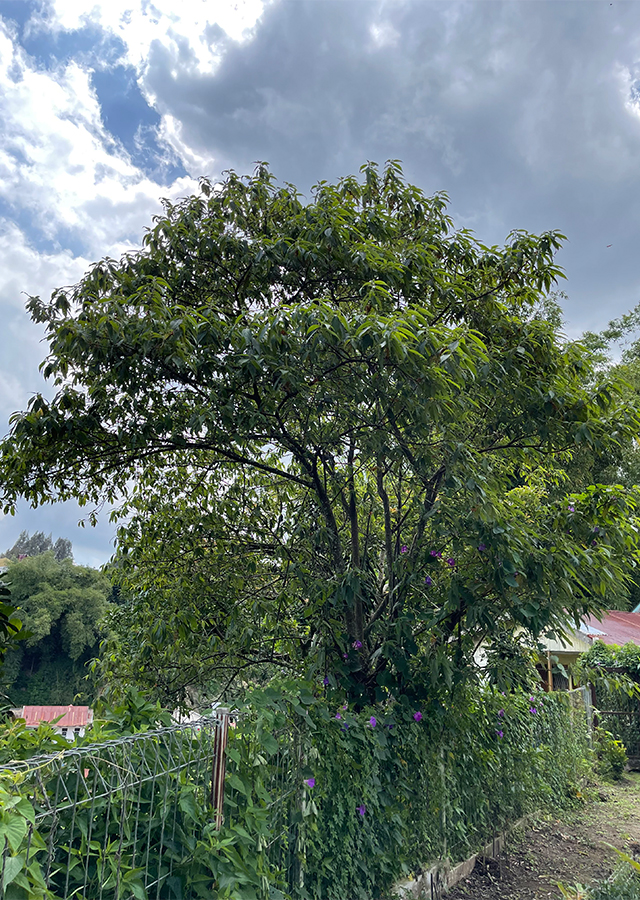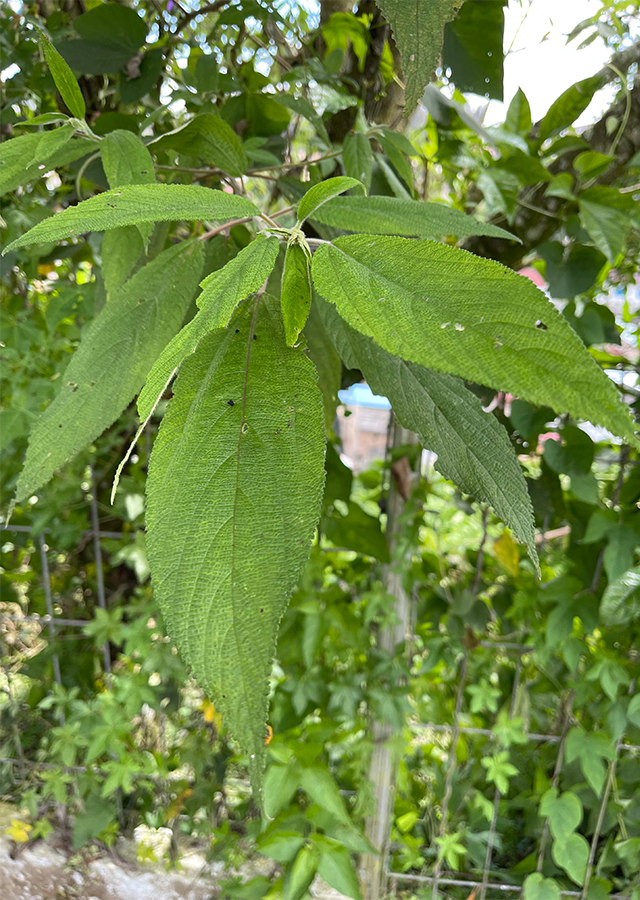Traditional Herbs from Debregeasia longifolia
treat_inflamed_joints
- Take enough fresh totongoan leaves, wash them until clean.
- Crush them until they become a paste.
- Apply the leaf paste on arthritis.
kudis_kulit
- Prepare enough fresh totongoan leaves, wash them until clean.
- Crush it until it becomes a paste.
- Apply the leaf paste on the scabies.
What is Debregeasia longifolia Looks like??



Parts of Debregeasia longifolia that could be used
- Leaves
- Fruits
- Roots
Debregeasia longifolia Distribution
Totongoan or Debregeasia longifolia has a very wide distribution. Its distribution includes East Asia (China), the Indian subcontinent, Myanmar, Thailand, Cambodia, Laos, Vietnam, Malaysia, Indonesia, the Philippines. This species is taken from nature, mainly used as a source of high quality fiber obtained from bark, but also as a food ingredient, drink (wine), medicinal plant, reforestation plant, and ritual plant (India). In India, Pakistan, and even Indonesia, bark fiber is used to make rope and fishing line. As a food ingredient, Debregeasia longifolia leaves have been used by the Batak Karo people (Indonesia) and the Garo Tribe (India) as a vegetable in their traditional cooking, and the fruit can be eaten directly. In Thailand, Debregeasia longifolia is planted as a pioneer species in reforestation projects to restore native forests. This species has also been classified as 'Least Concern' on the IUCN Red List of Threatened Species (2019). Apart from that, this species is also believed to have good health benefits, and has been used as a traditional herbal medicine in China.Agroecology of Debregeasia longifolia
Totongoan is usually found growing in shady, damp locations, especially in forests, river banks, tea plantations, and on the sides of watery mountains, at an altitude of 200-2,500 m above sea level. In the Himalayas, this species is mainly found in old cultivated lands, at altitudes up to 2,100 m above sea level. Totongoan or Debregeasia longifolia is a plant in tropical and subtropical areas that can tolerate occasional temperatures as low as around -5 °C. The growth of this species prefers fertile, well-drained clay soil in the shade and has the ability to grow in acidic water.
Morphology of Debregeasia longifolia
- Slender stem, sometimes zigzag from node to node. Bark gray, smooth.\u00a0Branches are round, slender, reddish brown or purplish, gray hairy.
- Leaves alternate (alternate ), spiral, thin leaf blades, narrowly oval or lanceolate to ovate or broadly elliptical, often slightly asymmetrical, leaf base tapered to narrowly rounded, leaf edges serrate, tip pointed leaves (acute) or pointed (acuminate), with 3 veins and (4-)5-6(-9) pairs of lateral veins. The upper surface of the leaf is rough, hairy, and green, while the lower surface is gray greenish, thinly hairy or grey-white tomentose. Stipules are lanceolate, bifid, 1 cm long, fused, fall off and leave a gray hairy scar.
- Flowers like knobs rounded, small, in the flowering phase bright red. Flower stalks are hairy like velvet. Inflorescences appear in axils, branched, with flowers in dense clusters, usually unisexual, rarely arranged with male clusters in the lower axils and female clusters towards the apex. the middle one in between. Male flower clusters are 3-5 mm in diameter, female flower clusters are 1.5-2.5 mm in diameter. Male flowers with 4-5 perianth parts, oval tepals while female flowers with 4-branched or lobed perianth, linear stigma.
- Fruit is sloping or oval-shaped, achene is slightly pressed to the side, rich in fiber. Ripe fruits are red, taste sour.
- Seed pods are orange-yellow when ripe.
Cultivation of Debregeasia longifolia
- Plant propagation through seeds (generative) and stem cuttings.
- Propagation through seeds is done by sowing first. Germination usually occurs within 1-2 months at a temperature of 20\u00b0C.
Debregeasia longifolia, more details :
Chemical Content of Debregeasia longifoliaFlavonoids (epicatechin, quercetin 3-O-#beta#-D-galactopyranoside, kaempferol 3-O-#beta#-D-galactopyranoside, quercetin 7-O-#beta#-D-glucopyranoside, apigenin 7-O-#beta #-D-glucopyranoside), phenolic compound.
Benefits of Debregeasia longifolia
Treats scabies, itchy skin, rheumatism, arthritis, digestive disorders, antidiabetic, treats sunburn on the skin, is sudorific (increases sweating). Has activity as an antioxidant.
Simplisia of Debregeasia longifolia
Another Facts for Debregeasia longifolia :
Synonym of Debregeasia longifoliaTrema lancifolium Ridl., Debregeasia angustifolia C.B.Rob., Leucocnide affinis Miq.
Habitus of Debregeasia longifolia
Bush. Shrub or small tree, annual, growing to a height of around 1.5-7 m
Habitat of Debregeasia longifolia
- Riverside
- Forest
No comments:
Post a Comment